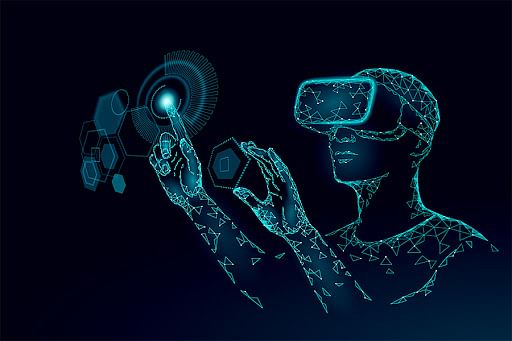The Role of Virtual Reality in Enhancing Customer Brand Engagement
Meta Description: Explore how virtual reality (VR) is transforming customer brand engagement by creating immersive experiences. Discover case studies, market growth statistics, and actionable strategies for businesses.
Virtual Reality (VR) is revolutionizing the way brands connect with their audiences. It is not just a technology for gaming or entertainment; it is increasingly being used in marketing strategies to render customer experiences memorable and interactive. This blog post delves into the significant role VR plays in enhancing customer brand engagement, providing insights and examples designed to inform marketers, business owners, and technology enthusiasts alike.
With over 5 years of experience in SEO and digital marketing, I have witnessed firsthand the impacts of innovative technologies on consumer behavior. I have helped more than 20 companies optimize their engagement strategies through emerging trends, including the use of VR. Now, let’s explore how this exciting technology can transform your brand’s approach to engagement.
Understanding Virtual Reality
What is Virtual Reality?

Virtual reality is a fully immersive digital environment that users can interact with in a seemingly real or physical way using special equipment, such as VR headsets. Unlike augmented reality (AR) and mixed reality (MR), which overlay digital components in the real world, VR creates a completely virtual environment where the user can immerse themselves and experience scenarios that would be impossible or impractical in the real world.
Components of VR Technology
- Hardware: This includes devices like VR headsets (e.g., Oculus Rift, HTC Vive), controllers, and motion sensors that facilitate user interactions.

- Software Applications: These applications provide the virtual environments that users interact with, whether for gaming, shopping, or educational purposes.
- Immersive Environments: These are carefully crafted 3D spaces that can simulate real-world experiences or entirely fantastical scenarios.
The Growth of VR Market
The virtual reality market is booming. According to a report from Statista, the global virtual reality market is projected to reach approximately $57.55 billion by 2027, growing at a staggering CAGR of 44.5% from 2020 to 2027. This meteoric rise signifies that businesses must adapt and explore how VR can enhance their customer engagement strategies.
Successful Case Studies
Nike: Immersing Consumers in Innovation
Nike utilized VR in their Nike+ House of Innovation experience. Here, customers can step into an immersive environment where they can interact with products and engage in unique brand storytelling. This innovative application has allowed Nike to create deeper emotional connections with customers, increasing brand loyalty.
IKEA: Visualizing Spaces
IKEA took advantage of VR technology through its app, allowing customers to visualize how different furniture items would look in their own home environments. This interactive experience fosters customer engagement by allowing consumers to make informed purchasing decisions—resulting in higher sales and improved customer satisfaction.
L'Oreal: A Virtual Makeover
L'Oreal has successfully implemented a VR experience that enables customers to virtually try on makeup products. This try-before-you-buy approach not only enhances customer engagement but also removes the uncertainties that often accompany online purchases, leading to increased conversion rates.
Consumer Engagement and Behavioral Insights
Engagement Metrics
The effectiveness of VR in engaging consumers is evident in various metrics. A survey by Greenlight Insights found that 61% of consumers preferred brands that incorporated VR in their marketing strategies. Additionally, companies employing VR report a notable increase in customer satisfaction metrics and brand affinity.
Emotional Connections
Research shows that immersive experiences utilizing VR can enhance emotional connections to brands. A study conducted by PwC reported that VR could improve collaboration and engagement in the workplace by an estimated 30%. This deeper engagement translates into customer loyalty, making consumers more likely to advocate for brands they resonate with.
Future Trends in VR Technology
The future of VR is bright, with several trends expected to shape customer engagement:
- Convergence with AI: As VR technology develops, the integration of artificial intelligence can offer personalized experiences to users, improving engagement methodologies.
- Social VR Platforms: The emergence of social VR platforms enables brands to directly interact with consumers in virtual spaces, creating a community around brand experiences.
Challenges and Considerations
While the potential of VR in enhancing customer engagement is immense, businesses should be aware of potential challenges, such as the high costs associated with developing VR content, accessibility concerns for all consumers, and the need for detailed strategy planning. Here are some tips to overcome these difficulties:
- Start Small: Pilot VR experiences before fully investing, allowing for trial, feedback, and iterative improvements.
- Focus on Accessibility: Ensure that VR experiences are designed to cater to various consumer capabilities and preferences.
- Content Development: Collaborate with professional VR content creators who understand marketing needs and can develop high-quality immersive experiences.
Experiential Marketing Strategies with VR
To harness the power of VR, businesses can consider integrating the technology into existing marketing strategies with the following actionable recommendations:
- Product Demonstrations: Create virtual showrooms where customers can interact with products under realistic conditions.
- Immersive Storytelling: Utilize VR to tell brand stories in immersive ways, engaging consumers and building emotional connections.
- Virtual Events: Host online events in virtual spaces, enabling broader participation and more dynamic interactions.
Industry Expert Insights
As one industry expert noted, “Embracing VR will not only captivate your audience but will also create meaningful connections that traditional marketing cannot achieve.” This sentiment encapsulates the potential VR holds for brands ready to innovate.
Conclusion
As consumer expectations evolve, harnessing the capabilities of virtual reality can redefine the landscape of customer brand engagement. As you explore the possibilities of VR within your marketing strategies, remember that its strength lies in fostering genuine relationships between brands and their audiences.
Are you ready to elevate your brand's engagement through the use of virtual reality? Explore creative applications of this innovative technology for your own strategy today. Share your thoughts or experiences with VR in the comments below—together, we can unravel the potential of virtual reality in driving business success!
